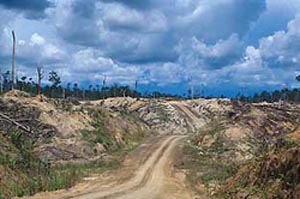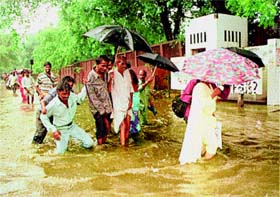Mr. Michael E.
Dudek
Saint Mary's Jr/Sr High School
World Geography / Environmental Science
The Himalayas: Geography
and Environmental Issues
Environmental
Woes
|
Environmental Concerns
in the Himalayan Region 
|
|
|
|
Lesson 1: 1. Assuming that you have taught your class about the importance of biodiversity and different ecosystems, present a slide show (powerpoint) or overhead images of environmental impact in the Himalayan region. (You may use this SLIDESHOW as an example) 2. Have the students observe the slides and describe what they
see through discussion. Try to raise questions concerning the cause,
effect, and resolution to the problem. 4. Assign studnets an opinion essay having them sum up their thoughts
of the slide show/discussion and formulating ways to conserve ecosystems.
Lesson: Learning
from Ladakh Resource: The
State of the Himalayas Resource: Books on Ecology and Environment Resource: Environmental
Watch: Development Resource: Wildlife
in Tibet Resource: Tibet Environmental
Watch *Lesson: Everyone
has an Everest*
|

Deforestation
courtesy of
Victor Cauduro Rojas
The Millennium Series
This site was created by Michael Dudek at the NEH Summer Institute "Cultures and Religions of the Himalayan Region," held at the College of the Holy Cross, Summer 2004

